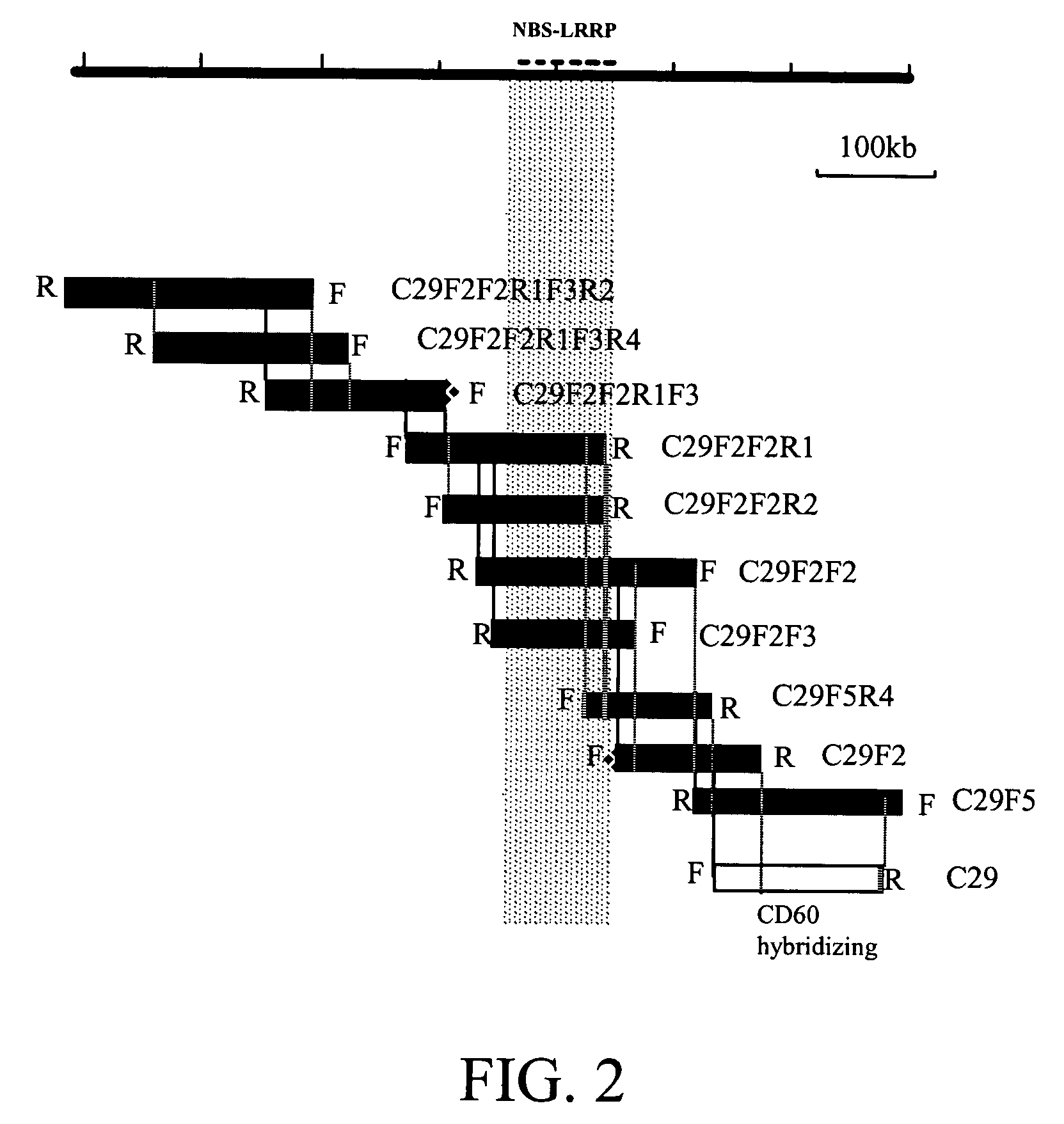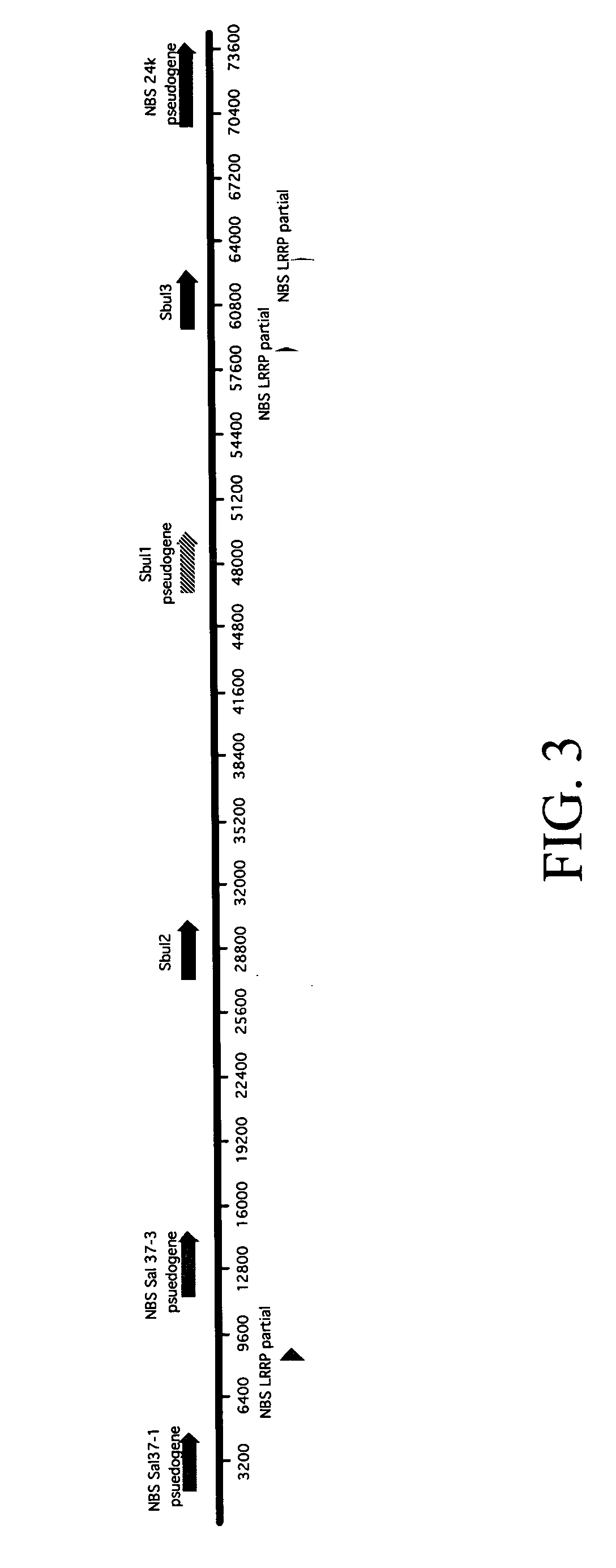Solanum bulbocastanum late blight resistance gene and use thereof
a technology of solanum bulbocastanum and resistance gene, which is applied in the field of plant resistance, can solve the problems of posing a serious threat to all potato producing regions, and reducing the cost of chemical control. , to achieve the effect of significant savings in chemical control of the pathogen
- Summary
- Abstract
- Description
- Claims
- Application Information
AI Technical Summary
Benefits of technology
Problems solved by technology
Method used
Image
Examples
examples
[0057]The following examples are intended only to further illustrate the invention and are not intended to limit the scope of the invention.
Map-Based Cloning of the S. bulbocastanum Late Blight Resistance Gene (Sbul1)
[0058]S. bulbocastanum DNA was introgressed into potato by somatic fusion at the University of Wisconsin (Naess et al., 2001). Fertile progeny were then back crossed to potato. The position of the S. bulbocastanum late blight resistance gene locus was mapped using a back-cross 3 population segregating for P. infestans resistance using a combination of AFLP (Vos et al., 1995) and RFLP techniques. The late blight resistance locus maps to chromosome 8 (Naess et al., 2001). The segregating population was subjected to AFLP mapping, exhaustion of the commercially available primer / enzyme sets resulted in identification of over 400 polymorphic bands. RFLP mapping was also employed, the population was screened with a variety of chromosome 8 markers. The relative positions of the...
PUM
| Property | Measurement | Unit |
|---|---|---|
| Electrical resistance | aaaaa | aaaaa |
Abstract
Description
Claims
Application Information
 Login to View More
Login to View More - R&D
- Intellectual Property
- Life Sciences
- Materials
- Tech Scout
- Unparalleled Data Quality
- Higher Quality Content
- 60% Fewer Hallucinations
Browse by: Latest US Patents, China's latest patents, Technical Efficacy Thesaurus, Application Domain, Technology Topic, Popular Technical Reports.
© 2025 PatSnap. All rights reserved.Legal|Privacy policy|Modern Slavery Act Transparency Statement|Sitemap|About US| Contact US: help@patsnap.com



